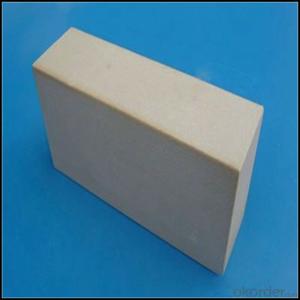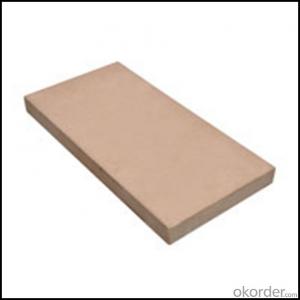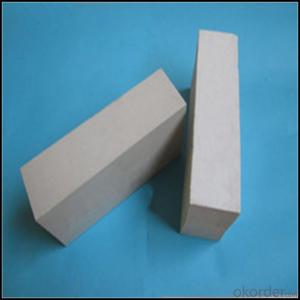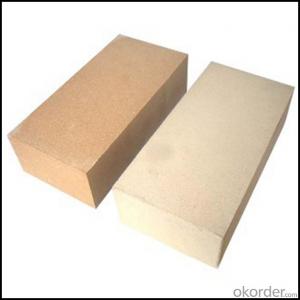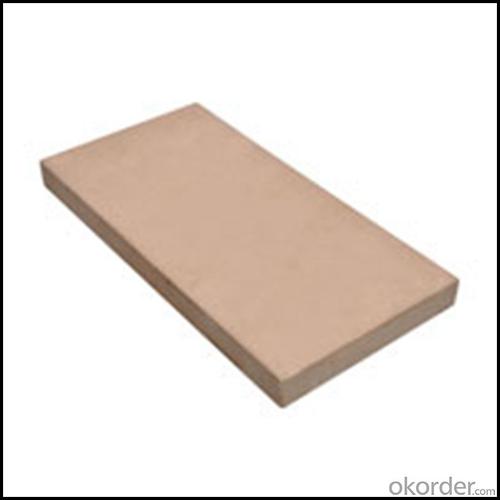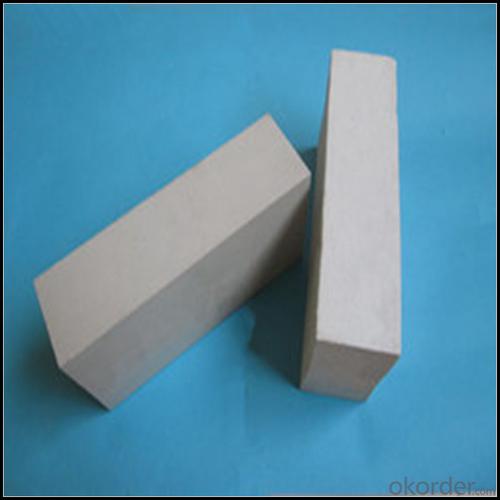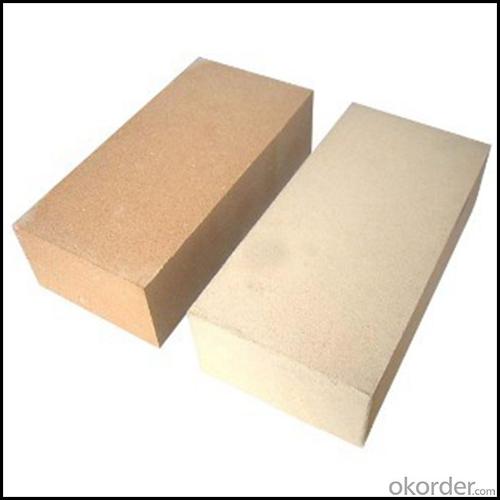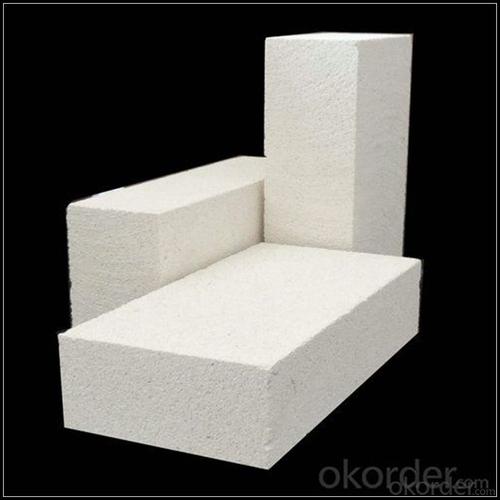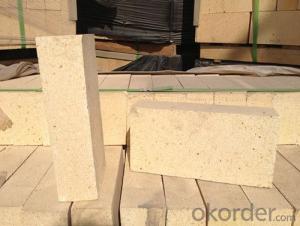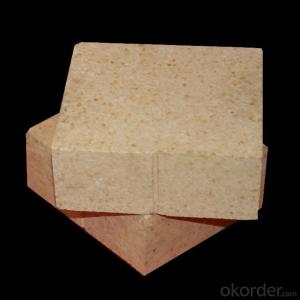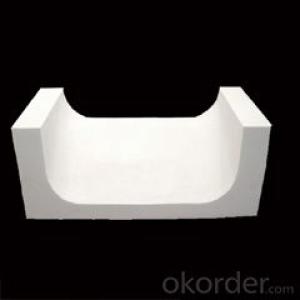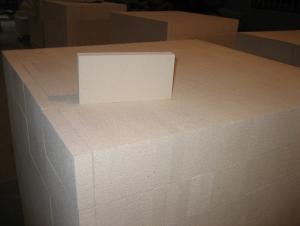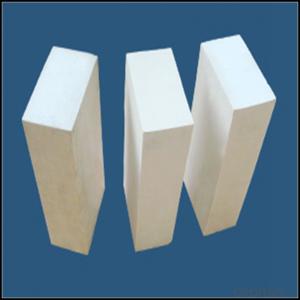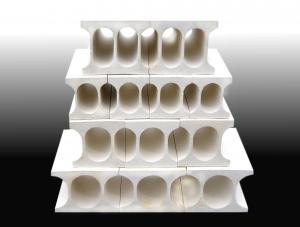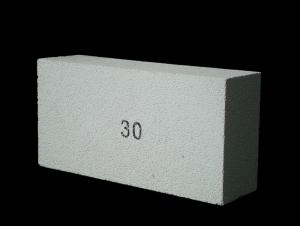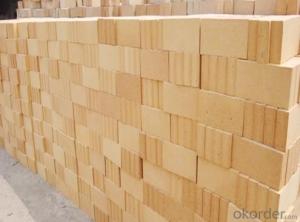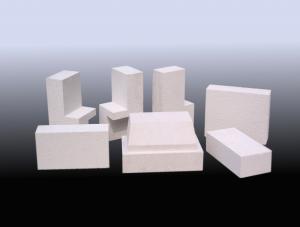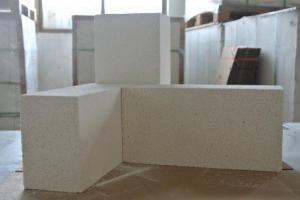Insulating Fire Brick SK32/34/36/38 Refractory Brick
- Loading Port:
- China main port
- Payment Terms:
- TT OR LC
- Min Order Qty:
- 0.01
- Supply Capability:
- 2600 m.t/month
OKorder Service Pledge
OKorder Financial Service
You Might Also Like
Acid Resistant Brick
CMAX firebricks are classified under temperature between 1300℃ to 1700℃, manufactured from high purity alumina clay.
High alumina refractory brick is dense shaped refractory material. With high refractoriness and mechanical behavior under high temperature, refractory brick is the necessary material of high-temperature services, mainly used for industrial furnaces and kilns and thermal equipment.
High alumina refractory brick has wide applications, mainly used in metallurgy, construction(cement and glass), petroleum, chemical industry, electric power and machine building.
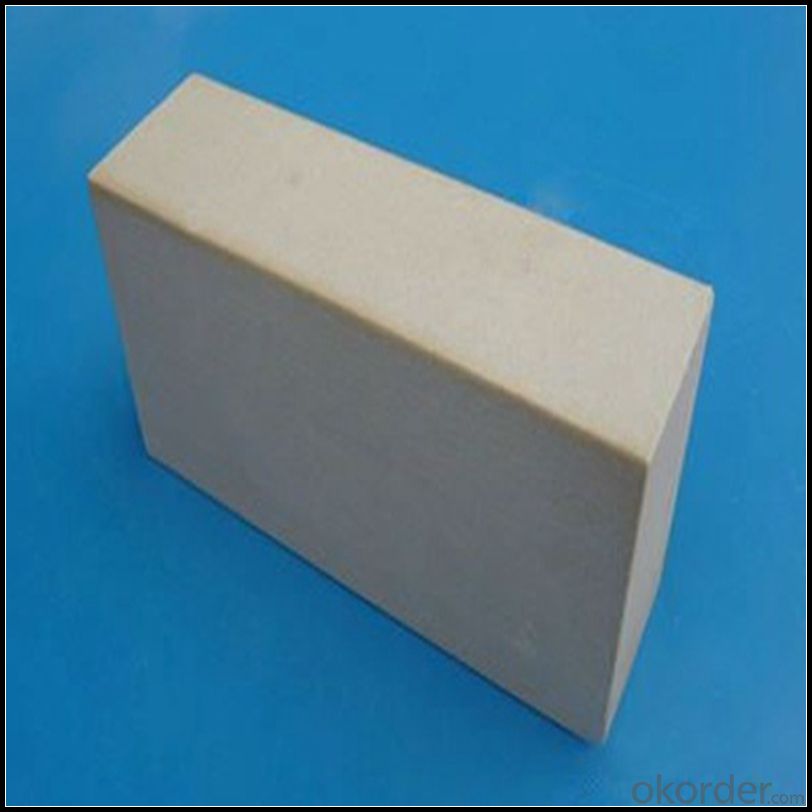
Features
1) Good thermal shock resistance
2) High-temperature endurable
3) Good thermal insulation
4) The using temperature is 1600 c
5) Phosphate high alumina bricks,iso
6) High strength
7) Low thermal conductivity
8) Widely used in cement kiln.
9) Low creeping rate
10) High pressure
11) Excellent thermal shock resistance
12) High quality fireclay clinker
Application
Iron & Steel Making Industry
Blast Furnace,Hot Blast Furnace(stove),Pellet Shaft Furnace,Hot Metal Ladle,Steel
Ladle, Tundish,Heating Furnace,Saking Pit Furnace,Heat Treatment Furnance.Refining Furnance,Reheating Furnance,Metal Mixter Furnance,Annealing Furnace,Cupola Furnace,Electric Arc Furnace,Induction Furnace,AOD Furnace,
cupola furnace,electric arc furnace,induction furnace,AOD furnace,VOD furnace,etc thermal technology equipment .
Non-Ferrous Metal Industry
Smelting furnace,refining furnace,reverberatory furnace,converter furnace
Building Materials Industy
cement kiln,glass kiln,ceramic kiln, lime kilns, kiln car,tunnel kiln
Energy & Incineration
Such as coke oven,general boiler,power generation boiler,circulating fluidized bed boiler,electric furnace,carbon roasting furnace,waste incinerators
Data Sheet
Classification Temperature (℉/℃) | 3000/1650 |
Bulk Density (g/cm3 ) | ≤1.0 |
Thermal Conductivity | |
800℃, W/m.K | ≤0.39 |
1000℃, W/m.K | ≤0.43 |
1200℃, W/m.K | ≤0.48 |
Reheating Linear Change (%) | 1550℃×12h |
≤0.9 | |
Chemical Composition (%) | |
Al2O3 | ≥75 |
Fe2O3 | ≤0.5 |
Packaging & Shipping
Packaging Details:Be packed in fumigated wooden pallets
Delivery Detail: 30 days after order

Our Services
Optimum solution and product supply of refractories for high temperature industries, such as iron steel, non-ferrous, petrochemical and building materials.
Engineering design, contract and consult for refractories, and civil architecture design.
Research, development, manufacture and sale of superhard materials.
R&D, manufacture and sale of special packing materials for export.
Inspection, supervision and arbitration of refractories.
Consultation and services in refractories information.
Training and cultivation of high-level talents in refractories profession
Sales Network

Company Information
CNBM (China National Building Material) Group is the largest comprehensive building materials group in China that in integrate scientific research, manufacturing and logistics into one entity. The largest building materials and equipment specialists in China. Upon State Council approval, today CNBM owned more than 300 subordinate manufacturing factories and servicing companies. There are 6 fully owned public listed companies and 11 partially owned with substantial shares public listed companies. In many of these fields, CNBM is playing the leading role in the building industry in the country.
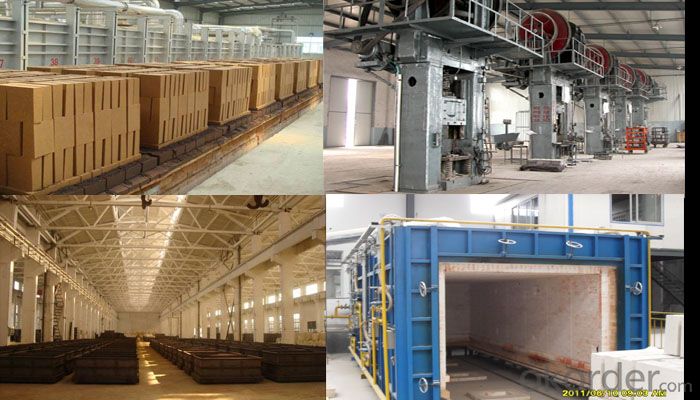
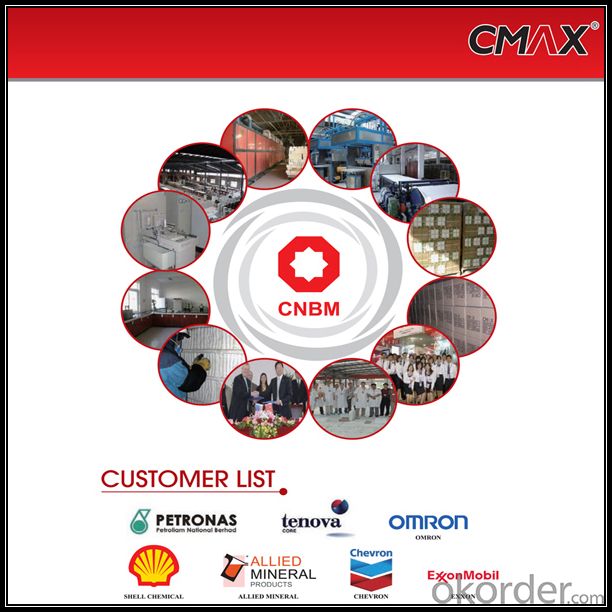
FAQ
1. Which products do you have?
We have all kinds of refractory brick, castable, mortar, cement, ceramic fiber products, etc.
Or you could browse our products to choose what you need.
2. Can you give me a brief introduction of the application of your products?
We are mainly specializing in the refractory materials in iron and steel, cement, glass, ceramics, petrochemical, electric power Industry, etc.
3. If I need your offer, what information do you need?
In order to choose suitable products, it will be appreciated to provide us the information, such us specification, technical data, order quantity, products application etc. If any question, please contact us freely.
- Q: Are insulating fire bricks safe to use?
- Insulating fire bricks are generally safe to use when used properly and in accordance with the manufacturer's instructions. These bricks are designed to withstand high temperatures and provide excellent insulation, making them ideal for applications such as lining kilns, furnaces, and fireplaces. Insulating fire bricks are made from lightweight materials such as alumina, silica, and other refractory materials. They are designed to minimize heat transfer, thus preventing the escape of heat from the enclosed area. This not only improves the energy efficiency of the system but also enhances safety by reducing the risk of overheating and potential fires. When using insulating fire bricks, it is essential to ensure that they are installed correctly and securely. Proper installation includes providing adequate support and reinforcement to prevent collapse or shifting of the bricks. Additionally, it is crucial to use appropriate mortar or refractory cement to join the bricks together, ensuring a strong and stable structure. While insulating fire bricks themselves are considered safe, it is important to note that they may contain small amounts of trace elements or materials that can be harmful if released into the environment. Therefore, it is recommended to follow the manufacturer's safety guidelines, such as wearing gloves, goggles, and a dust mask when handling the bricks. Overall, insulating fire bricks are a safe and reliable choice for insulation in high-temperature applications. However, it is important to take necessary precautions during installation and follow safety guidelines to ensure their proper and safe use.
- Q: Do insulating fire bricks have a low density?
- Insulating fire bricks possess a lower density in comparison to alternative brick types. Such bricks are engineered to embody a porous structure, thereby facilitating heat transfer reduction and insulation enhancement. The lightweight characteristic of these insulating fire bricks enables them to furnish efficient thermal insulation. Consequently, they prove apt for a multitude of applications wherein heat preservation and energy efficiency hold paramount significance, such as kilns, furnaces, and fireplaces.
- Q: Can insulating fire bricks be used in the construction of glassware production furnaces?
- Yes, insulating fire bricks can be used in the construction of glassware production furnaces. These bricks have excellent thermal insulation properties and can withstand high temperatures, making them ideal for creating a well-insulated and efficient furnace for glass production.
- Q: Can insulating fire bricks be used to build pizza ovens?
- Indeed, pizza ovens can be constructed using insulating fire bricks. These bricks are specifically designed to endure high temperatures and offer exceptional insulation, rendering them a suitable choice for pizza oven construction. With their low thermal conductivity, these bricks aid in retaining and evenly distributing heat throughout the oven. The insulating qualities of the bricks facilitate the attainment and maintenance of the desired temperature, ensuring efficient and consistent pizza cooking. Moreover, the lightweight nature of insulating fire bricks simplifies handling and installation during the construction process. All in all, due to their capacity to withstand high temperatures and provide efficient insulation, insulating fire bricks prove to be an excellent option for pizza oven construction.
- Q: Can insulating fire bricks be used in the construction of industrial dryers?
- Yes, insulating fire bricks can be used in the construction of industrial dryers. These bricks have excellent thermal insulation properties, which make them ideal for retaining heat within the dryer and reducing heat loss. Additionally, insulating fire bricks are resistant to high temperatures, making them suitable for the extreme heat generated in industrial dryers.
- Q: Can insulating fire bricks be used for insulation in heat exchangers?
- Yes, insulating fire bricks can be used for insulation in heat exchangers. Insulating fire bricks have excellent thermal properties, high insulation efficiency, and can withstand high temperatures, making them suitable for heat exchangers where insulation is crucial to minimize heat loss and increase energy efficiency.
- Q: Can insulating fire bricks be used in blast furnaces?
- Yes, insulating fire bricks can be used in blast furnaces. Insulating fire bricks are designed to withstand high temperatures and provide excellent thermal insulation. Blast furnaces operate at extremely high temperatures, typically around 1500°C (2732°F), and require materials that can withstand these harsh conditions. Insulating fire bricks are made from lightweight materials such as ceramic fibers, which have low thermal conductivity and can effectively retain heat. This makes them ideal for lining the walls and roofs of blast furnaces, as they help to conserve energy, reduce heat loss, and improve overall furnace efficiency. Additionally, insulating fire bricks can also help to protect the structural integrity of the blast furnace by reducing thermal stress and preventing excessive heat transfer to the surrounding environment. Overall, the use of insulating fire bricks in blast furnaces can contribute to improved performance, energy savings, and extended furnace life.
- Q: Can insulating fire bricks be recycled or reused?
- Insulating fire bricks have the potential to be recycled or reused. These bricks are composed of various materials like alumina, silica, and clay, which can be broken down and utilized in the production of fresh bricks. Recycling involves crushing the bricks into a fine powder and combining it with other raw materials to form new bricks. Additionally, reusing insulating fire bricks is viable in specific applications. If the bricks are still in good condition and undamaged, they can be extracted from one structure and employed in another. This practice decreases waste and conserves resources. In summary, whether through recycling or reusing, insulating fire bricks possess the ability to have a secondary life, contributing to a more sustainable and environmentally-friendly construction industry.
- Q: Can insulating fire bricks be used in kiln car construction?
- Yes, insulating fire bricks can be used in kiln car construction. Insulating fire bricks are made from lightweight materials that have excellent insulating properties, such as ceramic fibers or lightweight refractory aggregates. These bricks have low thermal conductivity, which means they can effectively retain heat and prevent heat transfer to the outer surface of the kiln car. Using insulating fire bricks in kiln car construction offers several benefits. Firstly, it helps to reduce heat loss, which improves energy efficiency and lowers fuel consumption. This is particularly important in high-temperature applications like kilns, where maintaining a consistent temperature is crucial. Secondly, insulating fire bricks can help to protect the kiln car from thermal stresses and cracking. Kilns undergo significant temperature changes during firing cycles, and the use of insulating fire bricks can help to minimize thermal shock and extend the lifespan of the kiln car. Furthermore, insulating fire bricks are lightweight compared to traditional refractory bricks, making them easier to handle and install in kiln car construction. This can lead to cost savings in terms of labor and transportation. However, it's important to note that insulating fire bricks have lower strength and durability compared to dense refractory bricks. Therefore, they are typically used in the hot face lining of kilns, while a more robust material is used for the kiln car structure. In conclusion, insulating fire bricks can be effectively used in kiln car construction to improve energy efficiency, protect against thermal stresses, and enhance the overall performance of the kiln.
- Q: What is the recommended method for installing insulating fire bricks?
- The recommended method for installing insulating fire bricks is to first prepare the surface by cleaning it thoroughly and ensuring it is dry. Then, apply a thin layer of refractory mortar to the surface where the bricks will be placed. Carefully lay the bricks in a tight, staggered pattern, pressing them firmly into the mortar. Use a level to ensure they are properly aligned. Allow the mortar to dry completely before subjecting the bricks to heat.
Send your message to us
Insulating Fire Brick SK32/34/36/38 Refractory Brick
- Loading Port:
- China main port
- Payment Terms:
- TT OR LC
- Min Order Qty:
- 0.01
- Supply Capability:
- 2600 m.t/month
OKorder Service Pledge
OKorder Financial Service
Similar products
Hot products
Hot Searches
Related keywords

